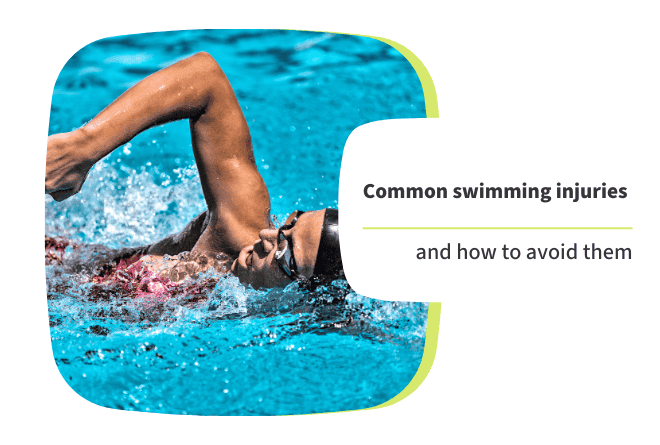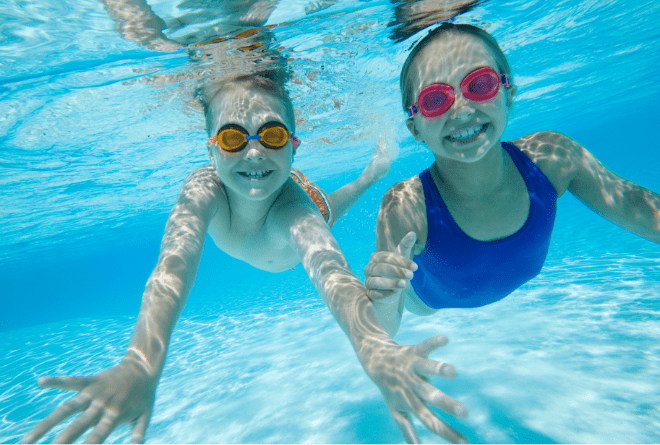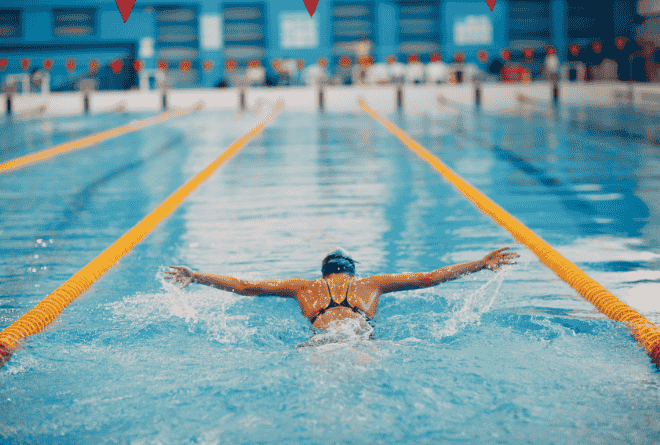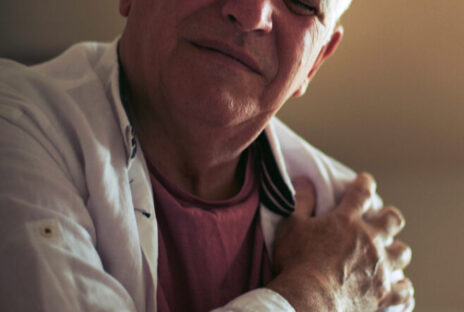Common injuries in swimming and diving and how to avoid them

Swimming is a sport that can provide a fantastic low-impact, full body exercise for people of all ages and skill levels for leisure, health and/or competition. Elite swimmers train between 2-5 hours per day, sometimes up to 20,000 yards a day. It is also a great sport to mix in for a balanced cardio workout when training for other sports or recovering from an injury. That said, swimming requires repetitive movements of both upper and lower extremities, and can also lead to overuse injuries. Training overload on arm and leg muscles, tendons, ligaments, and bones can then lead to fatigue, stress injuries, sprains, strains, and even fractures.
Swimming injuries
Common injuries for swimmers include overuse injuries to the shoulders, knees, hips, and back. Other non-orthopedic injuries include swimmer’s ear, dermatologic conditions, and even drowning. Tragically, in the US, more children ages 1-4 die from drowning than any other cause of death. Drowning is the second leading cause of unintentional injury death for children ages 5-14. Every year in the United States there are over 4,000 unintentional drowning deaths.
- Swimmer’s shoulder
- Low back pain
- Knee tendonitis/patellofemoral syndrome
- Foot and ankle tendonitis
- Swimmer’s ear
Swimmer’s shoulder
The most common injury in swimmers is called Swimmer’s Shoulder. This injury involves overload of the rotator cuff tendon, subacromial bursa and/or bicipital tendon. These muscles help to raise and rotate your shoulder. Improper form and/or excessive repetitive shoulder rotation can weaken the rotator cuff and lead to disabling pain. This causes pain with motion but also at rest and can affect flexibility. Certain strengthening exercises, if done improperly, can also lead to similar symptoms. Maintaining flexibility and using proper form and occasional rest from swimming are the best ways to treat Swimmer’s shoulder and to prevent further injury.

Low back pain
Other common overuse injuries in swimming include patellofemoral syndrome and knee tendonitis, which can cause pain around the knee. This typically happens secondary to repetitive kicking and can be prevented by varying the strokes in which you kick. Quadriceps strengthening and stabilization exercises provide additional support to the knee joint and surrounding musculature. If the swimmer has a specific injury or condition—such as a meniscal tear or patellar (kneecap) laxity—then certain kicks, such as breaststroke, should be limited.
Knee tendonitis/patellofemoral syndrome
Low back pain can also be common in swimmers, especially with breaststroke and butterfly swimmers. This can happen at a time of rapid growth in younger swimmers, and with weakening core strength and flexibility in older swimmers. Kickboards and also lead to pain caused by back hyperextension. Mixing up your strokes, using proper technique to avoid over arching the back and focusing on hip and core strengthening can all help to minimize low back symptoms while swimming.
Foot and ankle tendonitis
A less common injury is painful foot and ankle tendonitis, typically affecting the tendons in the front of the foot and ankle. These injuries are also secondary to overuse, in particular to repetitive kicking. These symptoms can also occur if using fins too often. Trying to mix up your strokes and also doing more sets with a pull buoy and focusing on arm work can help to limit persistent pain and limitations in the foot and ankle.
Swimmer’s ear
Swimmer’s ear is diagnosed with ear pain, itching and sometimes hearing loss. It occurs secondary to an infection (otitis externa) caused by too much water in the ear canal, which washes away natural earwax and creates a more moist environment for bacteria and fungus to grow. This infection is located in the outer part of the ear canal, external to the eardrum. Treatment consists of trying to keep the ear dry (ear plugs, swim cap) but sometimes requires ear drops with antibiotics, antifungals, and sometimes combined with steroids to help reduce swelling. After swimming, rinsing the ears with a 1:1 mixture of rubbing alcohol and white vinegar is a helpful way to ward off swimmer’s ear.

Prevention
Swimming injuries can be prevented by avoiding overuse and using proper technique. Appropriate body alignment in line with the head, correct entry and arm position, alternate side breathing, and mixing up swims with different strokes can all help to minimize overexertion injuries and pain. Stretching and warming up prior to and at the conclusion of a workout can help improve flexibility, increase range of motion, and limit overstraining certain muscle, tendons, ligaments and joints. Dryland and out-of-water strength training can also help stabilize and improve the endurance of arm, leg trunk and core muscles. In addition, for short-term relief, anti-inflammatories (ibuprofen, topical gels) and ice can help minimize muscle and joint inflammation.
It can be normal for swimmers to experience mild to moderate muscle soreness following training. However, if one experiences any unusual pain or pain that does not improve over time, then you should reach out to your coach, trainer or a sports medicine orthopaedic specialist for appropriate evaluation and treatment to prevent more serious injury.
Get convenient, comprehensive care
Whether you have swimmers shoulder or back pain from swimming, the care team at Florida Orthopaedic Institute includes specialists in every aspect of orthopedics. If you’re having discomfort, let us create a customized treatment plan to help you—safely—get back into action and keep active.
Don’t wait to schedule an evaluation with a specialist at one of our many convenient locations in Central Florida. Call us or request an appointment today.
By: Dr. Craig Radnay
You might also like:
- When are ACL injury symptoms serious enough to see a physician?
- 7 running safety tips for running safety month
- 7 tips to help avoid injuries while hiking
About Florida Orthopaedic Institute
Founded in 1989, Florida Orthopaedic Institute is Florida’s largest physician-led orthopedic group. It provides expertise and treatment of orthopedic-related injuries and conditions, including adult reconstruction and arthritis, foot and ankle, general orthopedics, hand and wrist, orthopedic trauma, shoulder and elbow, spine, interventional pain management, sports medicine, podiatry, physical medicine and rehabilitation, chiropractic services, and physical and occupational therapy, among others. The organization treats patients throughout its surgery centers in North Tampa, South Tampa, and Citrus Park, at several orthopaedic Urgent Care centers and at office locations in Bloomingdale, Brandon, Citrus Park, Gainesville, Lakeland, Northdale, North Tampa, Ocala, Palm Harbor, Riverview, South Tampa, Sun City Center and Wesley Chapel.
April 11, 2025


